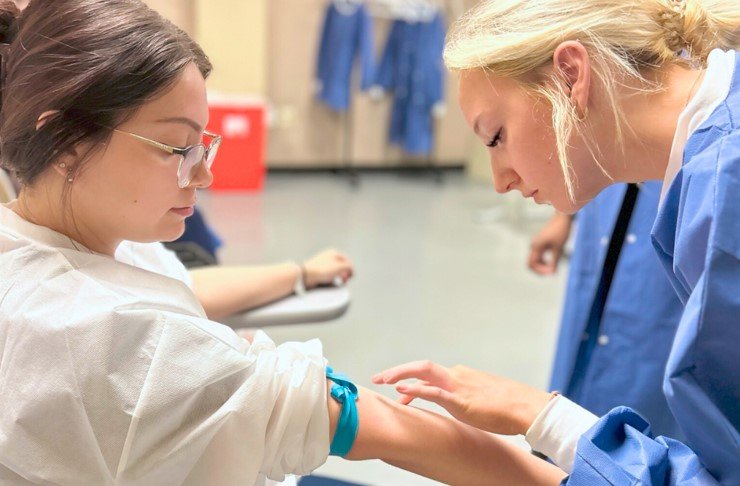Ensuring Adequate Supply of Personal Protective Equipment (PPE) in US Hospitals During Global Infectious Disease Outbreaks
Summary
- Hospitals in the United States face challenges in ensuring an adequate supply of personal protective equipment (PPE) during global infectious disease outbreaks.
- Proper inventory management techniques, strategic partnerships with suppliers, and emergency preparedness plans are key strategies hospitals use to maintain sufficient PPE stocks.
- The Covid-19 pandemic has highlighted the importance of effective Supply Chain management and the need for hospitals to adapt and innovate to meet the demand for PPE.
The Importance of Adequate PPE Supply
Personal protective equipment (PPE) plays a crucial role in preventing the transmission of Infectious Diseases in healthcare settings. During a global infectious disease outbreak, such as the Covid-19 pandemic, the demand for PPE skyrockets as healthcare workers and patients rely on these essential supplies to stay safe. Hospitals in the United States must ensure they have an adequate supply of PPE to protect their staff, patients, and the community at large.
Challenges Faced by Hospitals
However, maintaining an adequate supply of PPE is not without its challenges. Hospitals in the United States face several obstacles when it comes to managing their inventory of essential protective gear:
- Supply Chain Disruptions: Global disruptions in the Supply Chain can impact the availability of PPE, leading to shortages in hospitals.
- Surge in Demand: During a global infectious disease outbreak, the demand for PPE can surge rapidly, putting pressure on hospitals to secure enough supplies for their staff.
- Cost Considerations: PPE can be costly, and hospitals must balance the need for adequate protection with budget constraints.
Strategies for Ensuring an Adequate Supply
To overcome these challenges and ensure they have an adequate supply of PPE during global infectious disease outbreaks, hospitals in the United States employ a variety of strategies:
1. Inventory Management
Effective inventory management is essential for hospitals to track, monitor, and replenish their supply of PPE. By implementing inventory control systems and utilizing data analytics, hospitals can better anticipate demand and avoid stockouts.
2. Strategic Partnerships
Building strategic partnerships with suppliers is another key strategy hospitals use to ensure a stable supply of PPE. By working closely with trusted vendors, hospitals can secure priority access to essential protective gear during times of high demand.
3. Emergency Preparedness Plans
Hospitals also develop comprehensive emergency preparedness plans that outline protocols for managing PPE supplies during a crisis. These plans include strategies for reallocating resources, implementing conservation measures, and coordinating with local, state, and federal agencies.
The Impact of Covid-19 on PPE Supply
The Covid-19 pandemic has put a spotlight on the importance of maintaining an adequate supply of PPE in healthcare settings. As the virus spread rapidly across the globe, hospitals in the United States faced unprecedented challenges in securing enough protective gear for their frontline healthcare workers. The surge in demand for PPE, coupled with Supply Chain disruptions and global shortages, created a perfect storm that strained hospitals' ability to protect their staff and care for patients.
Adapting and Innovating
In response to the challenges posed by the Covid-19 pandemic, hospitals have had to adapt and innovate to meet the demand for PPE. Many healthcare facilities have implemented new strategies and practices to optimize their Supply Chain and ensure they have enough protective gear on hand:
- Implementing Just-In-Time Inventory: Some hospitals have adopted just-in-time inventory management practices to minimize excess stock and maximize efficiency in PPE procurement and distribution.
- Exploring Alternative Suppliers: Hospitals have diversified their supplier base and explored partnerships with new vendors to reduce reliance on a single source and increase Supply Chain resiliency.
- Engaging in Collaborative Efforts: Healthcare systems have collaborated with other organizations, such as government agencies, non-profit groups, and industry partners, to coordinate PPE distribution and address shortages collectively.
The Road Ahead
As the healthcare industry continues to navigate the challenges of the Covid-19 pandemic, hospitals in the United States must remain vigilant in their efforts to ensure they have an adequate supply of PPE during global infectious disease outbreaks. By implementing effective inventory management techniques, forging strategic partnerships with suppliers, and developing robust emergency preparedness plans, hospitals can better prepare for future crises and safeguard their staff and patients against the threat of Infectious Diseases.

Disclaimer: The content provided on this blog is for informational purposes only, reflecting the personal opinions and insights of the author(s) on the topics. The information provided should not be used for diagnosing or treating a health problem or disease, and those seeking personal medical advice should consult with a licensed physician. Always seek the advice of your doctor or other qualified health provider regarding a medical condition. Never disregard professional medical advice or delay in seeking it because of something you have read on this website. If you think you may have a medical emergency, call 911 or go to the nearest emergency room immediately. No physician-patient relationship is created by this web site or its use. No contributors to this web site make any representations, express or implied, with respect to the information provided herein or to its use. While we strive to share accurate and up-to-date information, we cannot guarantee the completeness, reliability, or accuracy of the content. The blog may also include links to external websites and resources for the convenience of our readers. Please note that linking to other sites does not imply endorsement of their content, practices, or services by us. Readers should use their discretion and judgment while exploring any external links and resources mentioned on this blog.

